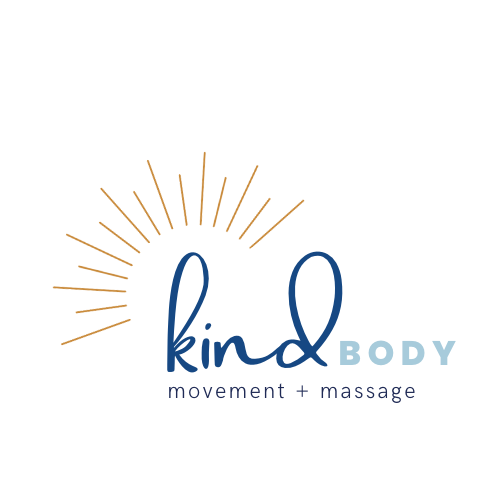Find Your Workout "Why"
Plus 12 more tips for exercising consistently
I used to really hate kale. It was too chewy and made me feel bloated. I also didn’t want to hop on the kale bandwagon (because even though it’s the “vegetable of the moment,” kale is not morally superior to other foods).
Even though I knew leafy greens were good for me, I didn’t really enjoy eating them. (So I didn’t!)
Then, I experienced an unexpected health event. I had to start taking medication that made the health benefits of those dark leafy greens seem more appealing.
I spent time learning different ways to prepare and serve kale that tasted better (less chewy and bitter) and felt better for my body (not bloaty).
I needed to find my own, intrinsic motivation to consume dark leafy greens to really get on board the kale bandwagon.
I see the same thing with my clients and exercise.
You know that exercise and physical activity are good for you—maybe your doctor has told you to get moving to bolster your overall health—but something’s still holding you back.
For every workout routine you begin with gusto, you just seem to fizzle out a few weeks in. You just can’t seem to make exercise a habit that sticks and you beat yourself up about it each time you “fall off the wagon.”
First off, be kind to yourself. Habit development is HARD. Here’s my tips for sticking to a workout routine that will help you get fit (and stay fit) for life!
You need to find your “why.”
Here’s my why…
I move because it helps me feel good mentally and physically and allows me to show up more authentically in my relationships. I want to maintain an active lifestyle as I age and I know if I don’t move it, I’ll lose it.
What’s your why?
Here’s some examples from my clients to help you consider your own why…
I want to be able to keep up with my grandkids.
I want to be able to pick up my kids without pain.
I want to be able to ride my bike to work.
I want to be able to run without pain.
I want to hike the Appalachian Trail.
I want to keep my body strong and pain-free for my favorite activity: rock climbing.
Your “why” is an important motivator. But sometimes, even when your “why” is super clear, you might start an exercise program only to lose momentum or burn out after a few weeks.
You might be struggling to stay consistent with your workouts because…
You’re working out too hard.
You should be able to carry on a conversation during physical activity. Does your workout leave you feeling tired and drained or energized?
You’re not allowing enough time for recovery.
Rest is so important and doesn’t necessarily have to be sedentary. Depending on your workout of choice, you can and should build active rest into your routine. Your body is not a machine (but even if it was, machines still need routine maintenance to keep functioning optimally).
Your workout has unintended consequences like pain and injury.
This can be a result of the previous two points. If you’re working out too hard and/or not taking time for recovery, you might be setting the stage for an injury.
Your workout is too easy and you get bored.
The right level of challenge can be invigorating. Be sure your workout is scalable to your developing level of strength and physical fitness.
You’re trying to do it alone.
A workout pal, coach, personal trainer, or movement mentor can help you stay accountable and inspired. A qualified professional can also help you stay on track with workouts that are appropriate for your level of fitness to minimize the risk of injury and burnout.
You’re not eating well to support your new level of physical activity.
I’m not a nutritionist or dietician by any means. But I do know that when I’m working out harder, I need to eat more in order to maintain my energy levels. If you’re feeling drained and tired after your workouts, consult a registered dietician to make sure your body is getting what it needs from your eating habits.
You can’t afford the time/space/energy needed to support your new level of physical activity.
Systems of oppression restrict access to self-care resources. Let’s face it, not everyone can afford a gym membership or the time required for a dedicated workout. This is a huge, systemic problem that I don’t have the ability to fix or fully address with one bullet point in one blog post. However, I offer several free resources on this blog to help you find no-cost and low-cost ways to add more physical activity into your life. In addition, I offer free 20-minute consults and am happy to work with you to find a sustainable solution for your budget and time.
Alternately, if you do have the financial and time resources available, consider advocating for those who don’t. Ask your gym or fitness studio about starting a “pay it forward” scholarship program. Vote for policies and government officials that promote access to health resources for all.
You don’t enjoy your workout.
Bottom line: if you don’t enjoy your workout, you’re not going to stick with it.
What’s more, you deserve to move in ways that FEEL GOOD.
If you knew for 100% certain that exercise would not change the way your body looks in any way—how would that change the type of exercise you choose to engage in? The intensity? The frequency?
Choose to move in ways that feel good and make you feel good; you’ll be more likely to put those movements on repeat.
More Tips for Exercising Consistently:
Plan for movement
Schedule in time for exercise. If you see a block on your calendar for a workout, you’re more likely to stick with it. What gets planned gets done!
Try a membership.
If your finances allow for it, consider joining a gym, studio, or on-demand fitness site. This way you’ll have consistent access to novel workouts. In addition, you’ll be investing your hard earned dollars, which can be a strong motivator!
Set up for success.
Are you hoping to walk or workout first thing each morning? Go to sleep in your workout clothes (or workout in your PJs!). Keep your gym shoes by the door so you have less to think about in the morning. Automate what you can to minimize the need to make decisions.
Design your movement lifestyle.
Instead of trying to cram all your fitness requirements into your 30 minutes at the gym, build more physical activity into your daily life so that your lifestyle becomes one that’s full of movements you enjoy.
Conclusion
Maintaining consistency with new routines can be tough! In my opinion, knowing your “why” and finding physical activities that you truly enjoy are the two most important factors in developing and sticking with a workout habit.










